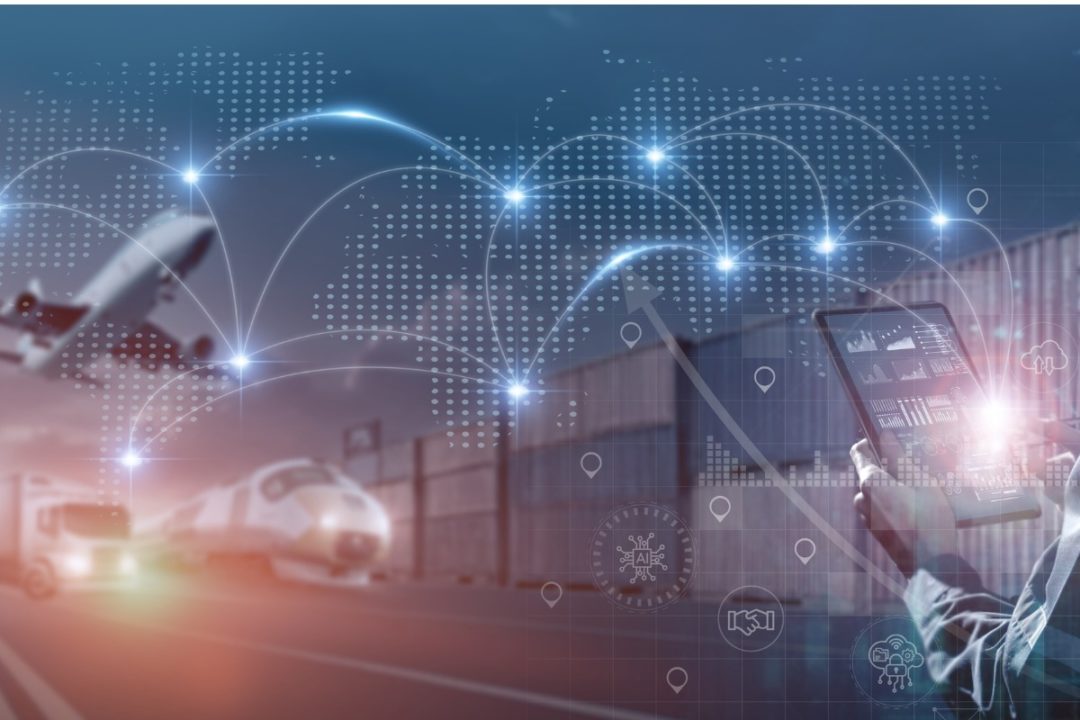
As the backbone of global trade and commerce, transportation and logistics companies are under increasing pressure to enhance efficiency, reduce costs and meet sustainability goals.
A recent survey conducted by HERE Technologies, developed in part with Amazon Web Services, sheds light on the significant challenges hindering the industry’s widespread adoption of technology across Germany, the U.K. and U.S.
The industry survey explored a number of trends and topics, including supply chain visibility, data analytics, artificial intelligence, sustainability, and overall barriers toward technology adoption.
Seventy-two percent of transportation and logistics professionals in Germany and the U.K., and 68% in the U.S., believe their companies are making some progress toward achieving real-time supply chain visibility. Yet fewer than 25% in each country feel they’ve made “significant” progress. Achieving full end-to-end supply chain visibility remains a challenging endeavor.
To address this, organizations should be looking to invest in technologies that enhance visibility across all modes of transportation. Thirty percent of respondents rank improving fleet utilization, route planning and tracking as top considerations. Integrating these technologies can provide the data insights needed to optimize operations and improve supply chain visibility.
At the forefront of challenges impeding technology adoption is the real issue of cost. The survey revealed that 31% percent of transportation and logistics professionals in Germany, 23% in the U.K., and 23% in the U.S. cite cost as the primary barrier to further technological implementation. Respondents want reliable solutions that are easy to use, can be seamlessly integrated into existing processes and systems, and don’t require extensive technical expertise or costly technology overhauls.
Another noteworthy challenge highlighted in the survey is the fear of disruption to existing services, with 12% of professionals acknowledging it as a significant barrier. The industry operates on tight schedules and intricate networks, leaving little room for service interruptions. The prospect of technological implementation causing disruptions is a legitimate concern that must be addressed through careful IT planning, phased technology rollouts, and comprehensive change-management strategies.
To mitigate the disruption dilemma, organizations can also invest in training programs, so that employees are equipped to navigate the transition seamlessly. Furthermore, collaboration with technology partners who understand the intricacies of the industry can facilitate smoother integrations, minimizing downtime and optimizing efficiency.
The survey found 11% of respondents citing a lack of internal expertise as a key barrier to technology adoption. This underscores the industry's need for accessible and user-friendly solutions that don’t require extensive technical expertise. As organizations embark on the journey of digital transformation, they must prioritize the development of in-house expertise as well as seek external partnerships to bridge the knowledge gap.
Training programs, workshops, and collaborative initiatives with technology providers can empower industry professionals with the necessary skills to deploy advanced tools effectively. The emphasis should be on creating a culture of continuous learning, fostering an environment where employees feel confident embracing new technologies as integral components of their daily workflows.
Despite the global emphasis on sustainable practices, the survey exposes a significant gap in the prioritization of sustainability among logistics companies in all three regions. A staggering 33% of respondents said their organizations lack sustainability goals, with an additional 27% indicating that such goals are still "under development." This raises a critical question about the industry's commitment to addressing environmental concerns and meeting evolving regulatory standards.
Environmental and operational resilience remain core topics within the global logistics industry in 2024. Technology implementation for more efficient operations will be crucial as the industry continues to face market and cost pressures.
Sustainability metrics can be a byproduct of technology implementation that improves customer satisfaction, driver safety and fuel consumption.
How to start? Focus on fuel and route optimization. Trucking is the most common mode of freight transportation, and fuel is the number-one expense for trucking fleets. By focusing on fuel and route optimization, companies can reduce both their expenses and emissions.
Globally, only 16% of respondents use automated fleet tour planning in the back office, and 40% use driver routing applications. Both tools draw on a vast amount of data, such as vehicle restrictions and real-time traffic data, to increase efficiency and reduce fuel consumption. Companies that already use these technologies can go one step further and aim at reducing truck idling and dwell time.
The market offers an increasing number of commercial truck fuel optimization tools and advanced driver assistance systems. Commercial vehicles today can reduce fuel consumption by 3% to 5% by taking advantage of “eHorizon” fuel and powertrain optimization technology.
Transportation and logistics providers face formidable challenges in embracing technology and meeting sustainability goals. By addressing the cost conundrum, mitigating disruption fears, closing the knowledge gap, prioritizing sustainability, and focusing on improving supply chain visibility, the industry can realize the full potential of technological innovation. Collaboration, strategic partnerships and a commitment to continuous improvement will be instrumental in steering the sector toward a future marked by efficiency, visibility and resilience.
Nicholas Zabikow is senior director of logistics and technology at HERE Technologies. Eric Topp is worldwide head of transportation & logistics solutions and strategy with Amazon Web Services.







